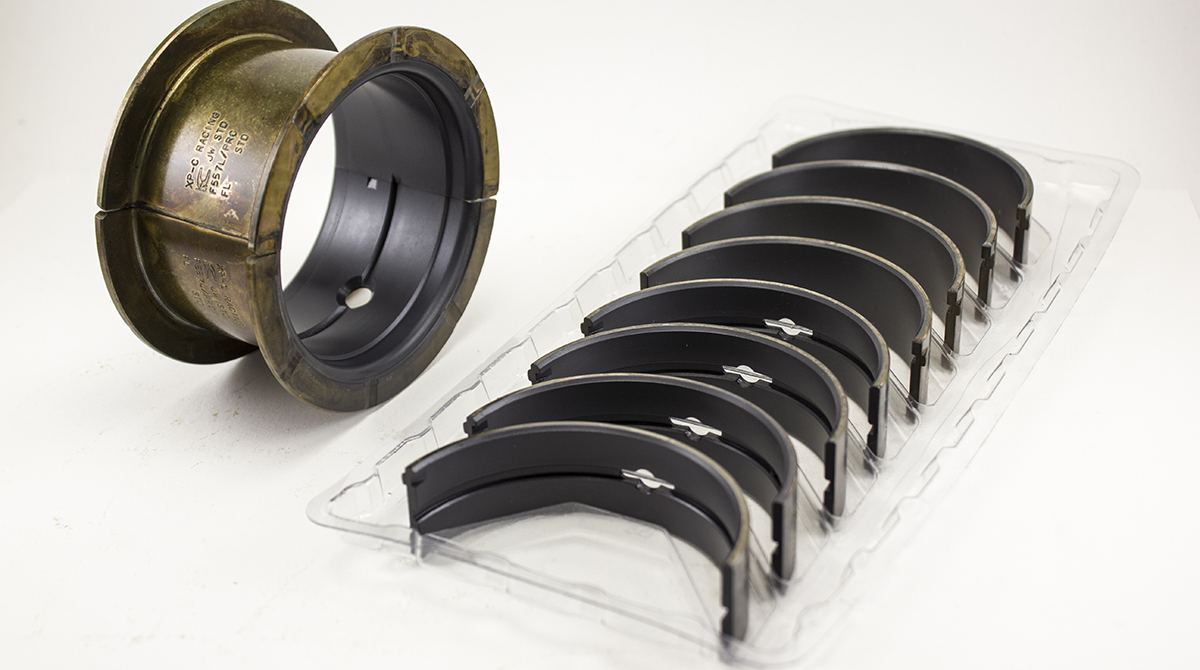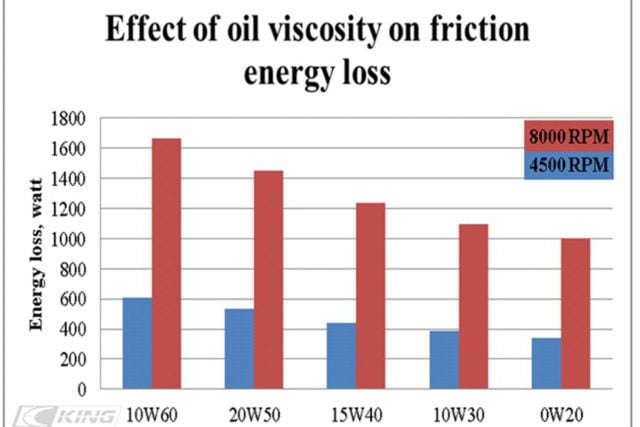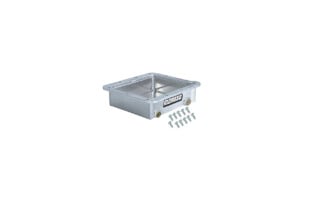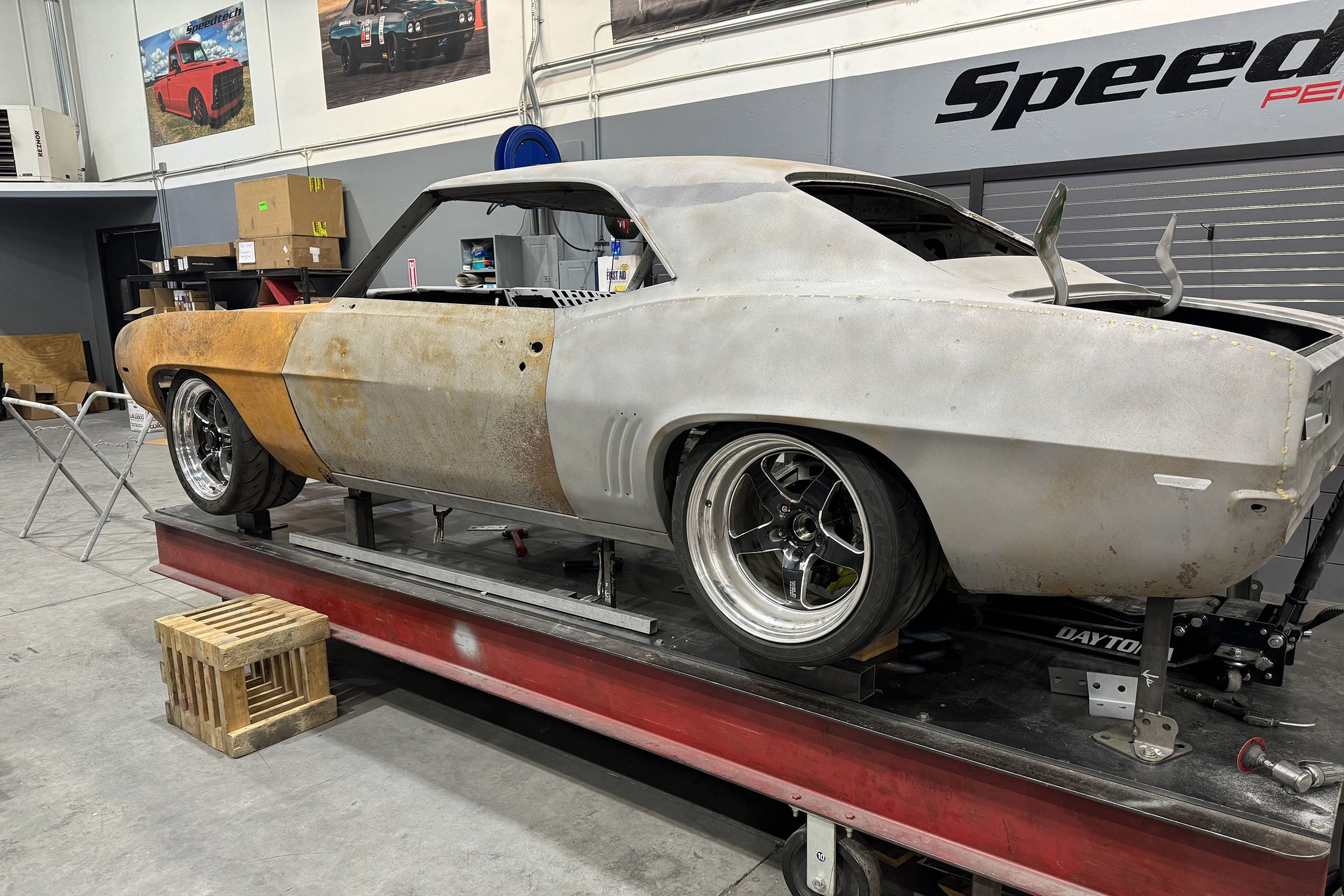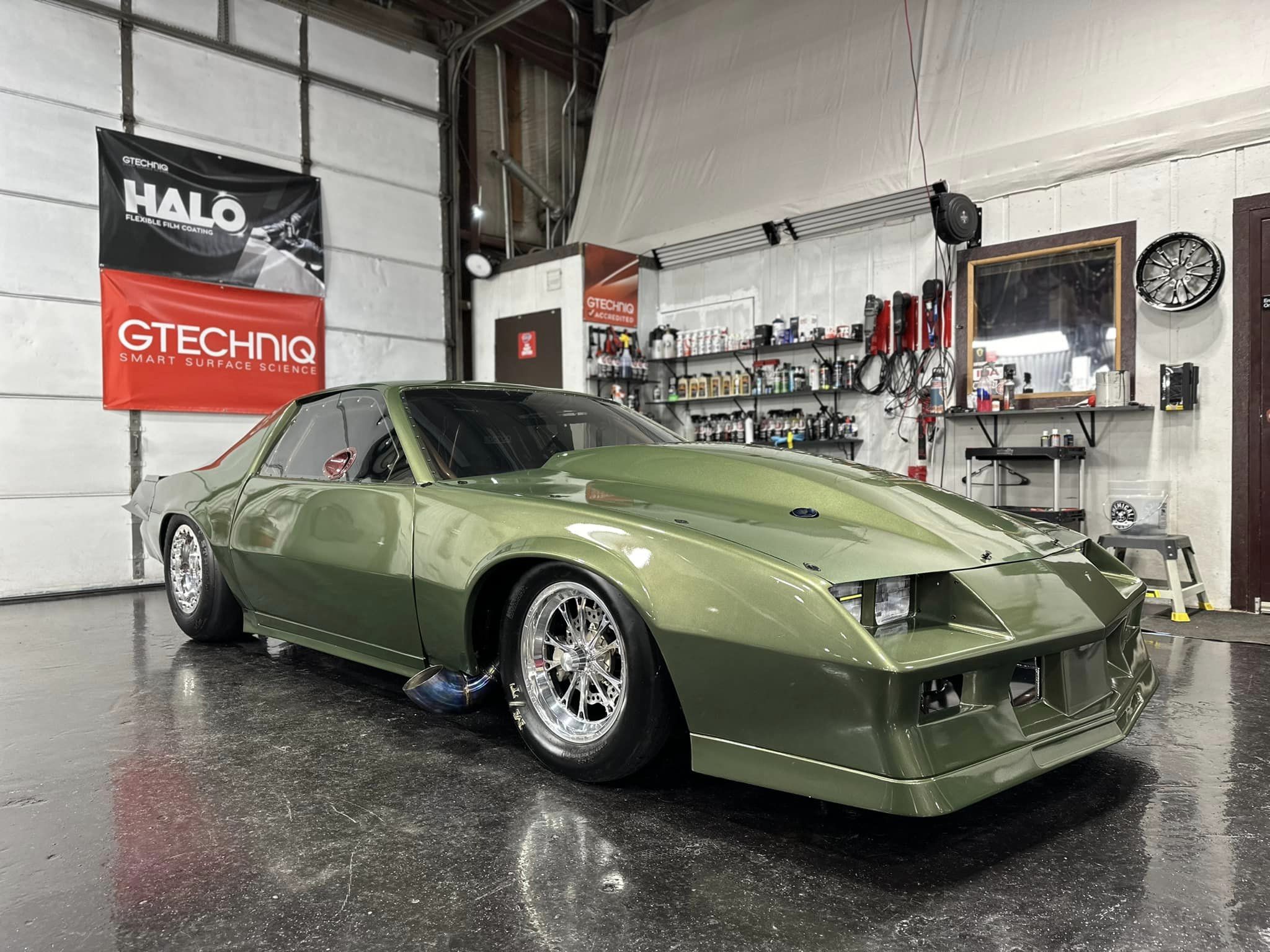Engine bearings and their performance under pressure are not the most exciting topic even to the most dedicated engine geek, but they should be; these small slivers of material are all that separate your engine from serous destruction. Recently, advances in material design have allowed bearing manufacturers such as King Engine Bearings to develop products using polymers to protect them in severe-duty situations. Often, advancements in product performance are driven by the requirements of the original-equipment market, and that’s especially true when it comes to bearing construction.
So how do these polymers work? First, we must understand the operating conditions of today’s engines and why more durable products are required. After all, the typical engine bearing’s basic design hasn’t changed much over the last half-century or so–but the bearing’s operational capabilities certainly have improved.
“Most of the time, engine bearings work in the regime of hydrodynamic lubrication. As such, the bearing surface is separated from the crankshaft surface by the oil film generated from shaft rotation. However, due to continuous developments in the design of internal combustion engines, the typical minimum values of oil film are getting smaller and smaller,” says Dr. Dmitri Kopeliovich, Director of Research & Development at King Bearings.
He says there are several factors which are responsible for this: more compact engine designs (for weight savings and fuel efficiency reasons), start-stop technology, the use of low-viscosity oils, and higher specific engine output.
Details on the required advancements in bearing technology can be uncovered when you compare the small-block Chevrolet engine’s evolution as an example. In 1955, the first-gen 265ci engine mustered up 180 horsepower, or .68hp per cubic inch. By the time the LS9 debuted, the 376ci engine produced 638 horsepower, or 1.7hp per cube, which is an increase of 150-percent. The bearing technology had to advance to keep up with this expansive power growth.
To reduce fuel consumption, low-viscosity oils have become standard fare, which helps to reduce energy losses within the engine. But when you place an excessive load on the engine in combination with the reduced lubrication capabilities of the lower-viscosity oils, failures can present themselves rather easily as metal-to-metal contact between the bearing and crankshaft or connecting rod journal becomes reality. Lightweight crankshafts and connecting rods exacerbate the concerns, as both components can distort at higher RPM levels. As a result, super-low-friction coated bearings are virtually required to ensure engine longevity.
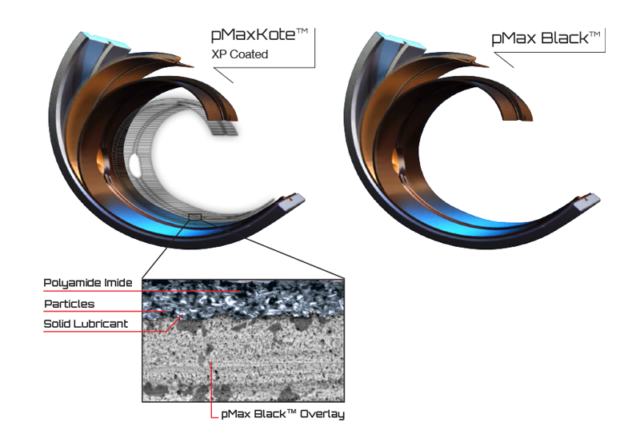
Standard pMax Black bearings have three layers of bearing material, while the pMaxKote™-treated bearings add the fourth layer of polymer to help resist engine damage and improve performance.
And let’s talk about stop-start engines for a moment. They offer substantial reduction of emissions and improved fuel economy by shutting down at stoplights and in other situations where the engine is not required to run, but there are others concerns which can affect bearing performance and life.
“A hydrodynamic regime of lubrication is stable only within a certain range of rotation speed. If the speed drops down, the hydrodynamic force decreases and becomes insufficient for counteracting the load applied to the bearings. Metal-to-metal contact ensues and the bearing material wears faster than in the hydrodynamic regime,” says Kopeliovich.
“Since start-stop engines shut down and restart very frequently (10 times more frequently than classic engines), the bearings operate in a condition of mixed lubrication, with metal-to-metal contact, much more of the time. Such conditions require bearing materials with greatly enhanced anti-friction properties.”
Digging Deeper Into The Details
So how do those concerns become research into–and application of–polymer coatings to reduce friction?
“The main purpose of coatings in conventional existing applications is to provide some protection from overlay wear during mixed lubrication regimes. For example, coatings prevent cold start wiping. Coatings prolong bearing life when operating with very thin or negligible oil films,” says King’s Performance & Technical Manager, Ron Sledge.
“However, the true potential and benefits of coatings are quite underestimated. They can play a much more important role in preventing seizure and reducing wear of highly loaded bearings.”
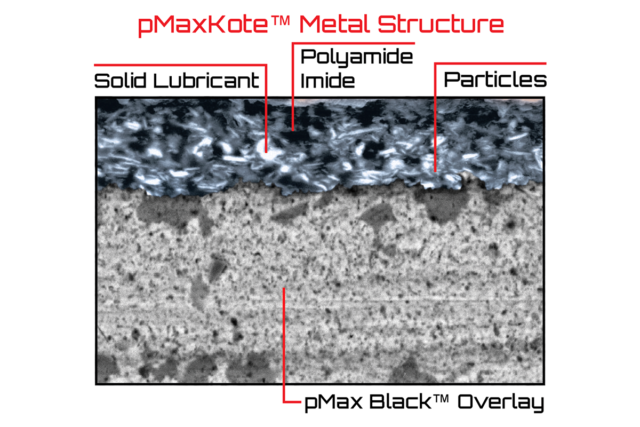
King’s pMaxKote™ polymer bearing coating is a patented formulation that provides bearing protection when used in today’s high-output, thin-oil-equipped racing engines. The coating’s composition prevents seizure and wear in highly-loaded situations.
The lack of oil during these mixed lubrication scenarios is opposed by the use of solid lubricants, which are applied to the bearing surface as fine particles within a polymer matrix. Polymer, by definition, is a substance that has a molecular structure consisting chiefly or entirely of a large number of similar units bonded together. This material is then applied to the surface of the bearing to serve as its top layer.
The polymer provides an extra layer of support between the crankshaft and the oil wedge. Since the polymer contains lubricant material, it falls into both categories: bearing material, and lubricant. There are two styles of polymer coatings: a temporary layer which aids in first-time engine startup and eventually wears off the bearing surface, and a permanent antifriction overlay which is designed for lifetime performance.
The Four Keys To Polymer Longevity
Dr. Kopeliovich says there are four specific targets the company has when developing a polymer for use in internal combustion engines–and all polymers are not the same.
- Antifriction properties – a combination of surface soft properties: low coefficient of friction, conformability (the ability of the bearing material to accommodate geometry irregularities of the bearing, its housing or journal), seizure resistance (the ability of the bearing material to resist physical joining with the journal material) and embedability (the ability of the bearing material to absorb small foreign particles).
- Wear resistance – the ability of the bearing material to maintain its dimensional stability under conditions of intermittent direct contact between the bearing and journal materials.
- Toughness and impact resistance – ability to absorb energy without fracturing.
- Fatigue strength – the maximum value of cycling stress that the bearing can withstand after an infinite number of cycles.
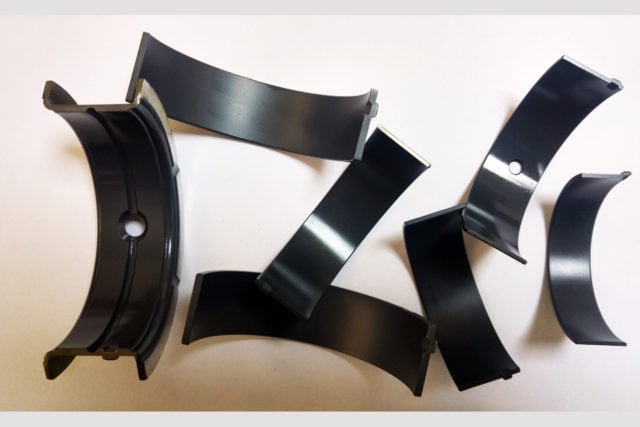
Dr. Kopeliovich says the pMaxKote™ nano-composite polymer coating does not require any additional clearance to be machined into the parts during the machining and assembly process.
He explains that the polymer base must be thermostable at temperatures up to 500 degrees Fahrenheit, strong, and wear-resistant. But the polymer by itself can’t be used as the bearing coating–its antifriction and mechanical properties must be enhanced with other additives. The antifriction properties especially may be improved substantially by adding solid lubricants to the mix.
“King’s newly developed polymer coatings contain abrasive particles of optimal dimensions which produce the maximum desired level of wear resistance, ” says Sledge.
“Fatigue strength of a composite material is determined by the properties, contents and dimensions of all constituents of the composite material. The high load capacity (fatigue strength) of King polymer coatings is guaranteed by the balanced combination of a strong polymer matrix and the sum of its additives.”
To ensure the additives have been distributed properly in the polymer mixture, King developed a proprietary technology to prevent sedimentation of the heavy particles.
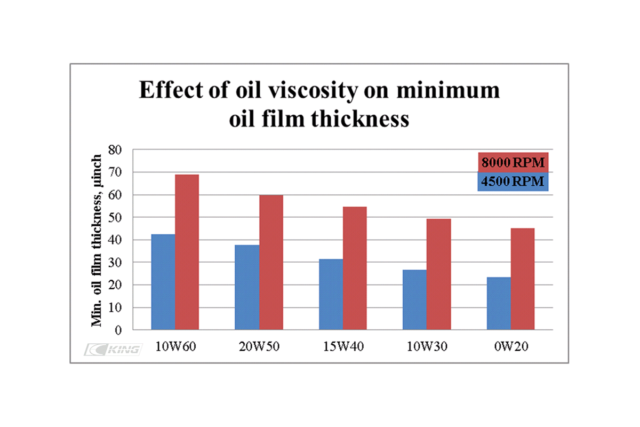
As with the oil viscosity vs. energy loss chart up above, we see that viscosity also plays a part with respect to film thickness–and this is where polymer coated bearings come into the picture. As race oil gets thinner and thinner, the bearing must be able to absorb the loads from the engine without failure.
Into The Matrix
The coatings developed by the company are composed of different types of inorganic and ceramic additives dispersed in a polymer matrix, designed to help the underlying bearing structure handle the loads placed upon them.
The coatings have nano-dimensions, defined as between 1 and 100 nanometers. One nanometer is a unit of length equal to one billionth of a meter, or .000000001-meter. As such, the material can be called a polymer ceramic nano-composite.
Currently they have three separate polymer formulations: K-340, K-334 (also called pMaxKote™), and K-40. The K-340 coating is strong, and works best when applied over relatively hard substrate materials. It’s designed for use in diesel direct injection engines, turbocharged gasoline engines, race engines, stop-start engines, and hybrid engines.
pMaxKote™ is wear-resistant, and designed to coat the company’s tri-metal pMax Black XP high performance bearings, used traditionally in racing applications.
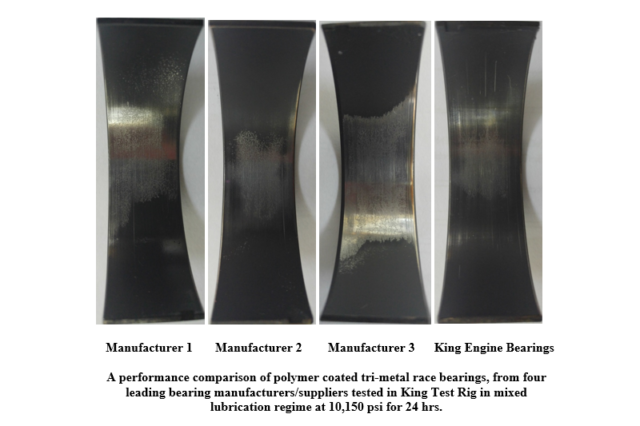
Dr. Kopeliovich says two conclusions can be made from inspecting the bearings post-test: the wear rate of the pMaxKote™ coating is the least of the four tested manufacturers, and the fatigue strength of the pMax Black™ bearings is greater than the competitive products, as evidenced by the clear fatigue cracks in the overlays of those bearings.
“The coating helps to improve XP bearing wear resistance under conditions of metal-to-metal contact. It also increases the resistance of tri-metal bearings to cavitation erosion,” says Sledge.
“pMaxKote™ is not a sacrificial coating. In contrast to other coated bearing manufacturers and suppliers, King coatings do not change oil clearance. The wall thickness of King coated bearings is equal to that of the non-coated versions.”
Lastly, the K-40 coating composition is soft and sacrificial, meaning that it’s designed to wear off the bearing as the engine’s lifespan increases. Sledge says the composition was designed to be used in engines which see extreme conditions and continuous metal-to-metal contact, like those used in drag racing.
As you can see, each formulation has a place where it excels.
In Conclusion
Polymer coated engine bearings offer the end user superior protection and performance in extreme scenarios, extend engine life, and provide vastly improved lubricity over non-coated bearings. Are they the right choice for your engine build? That’s a decision only you can make, but one thing is for sure–they certainly can’t hurt.


